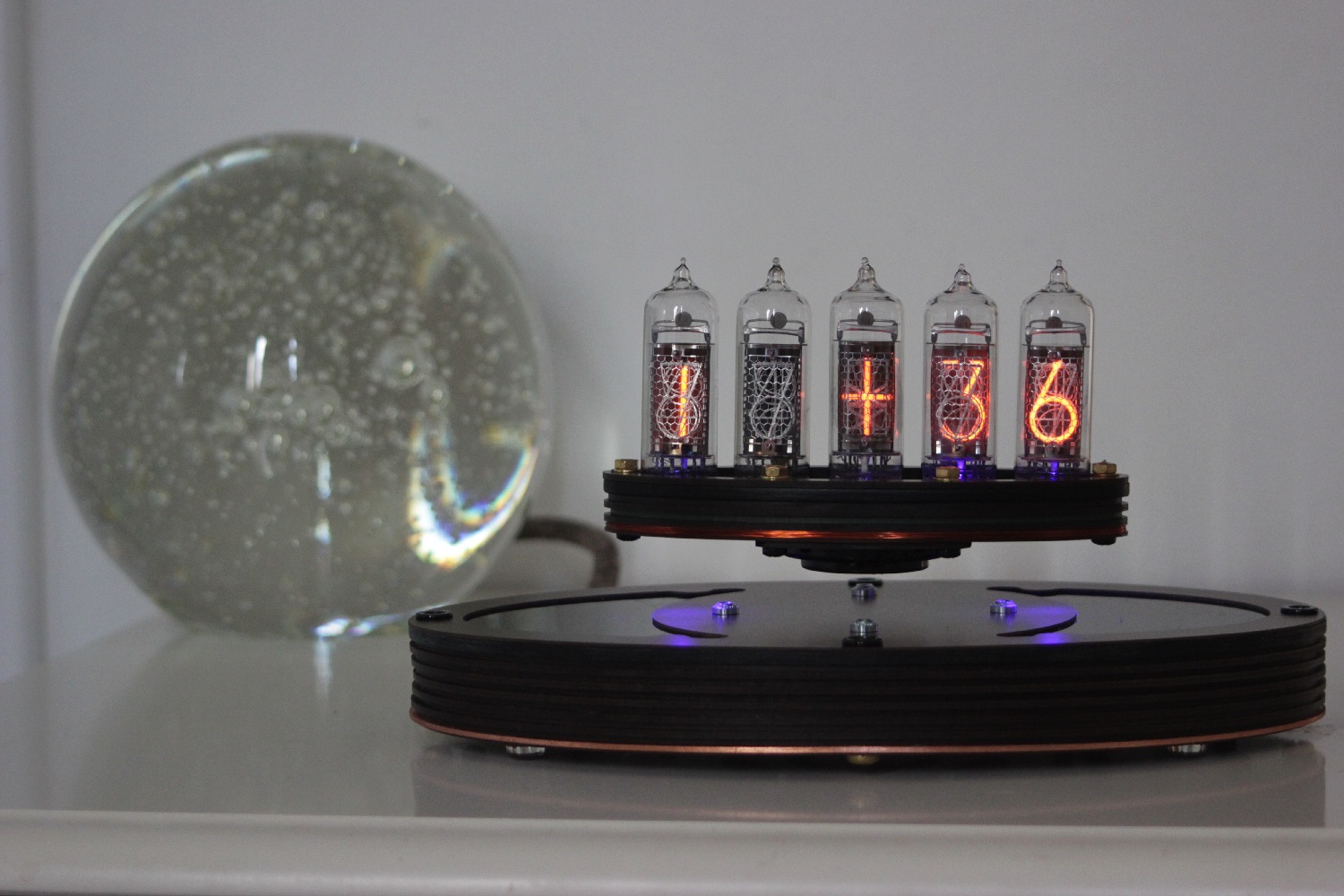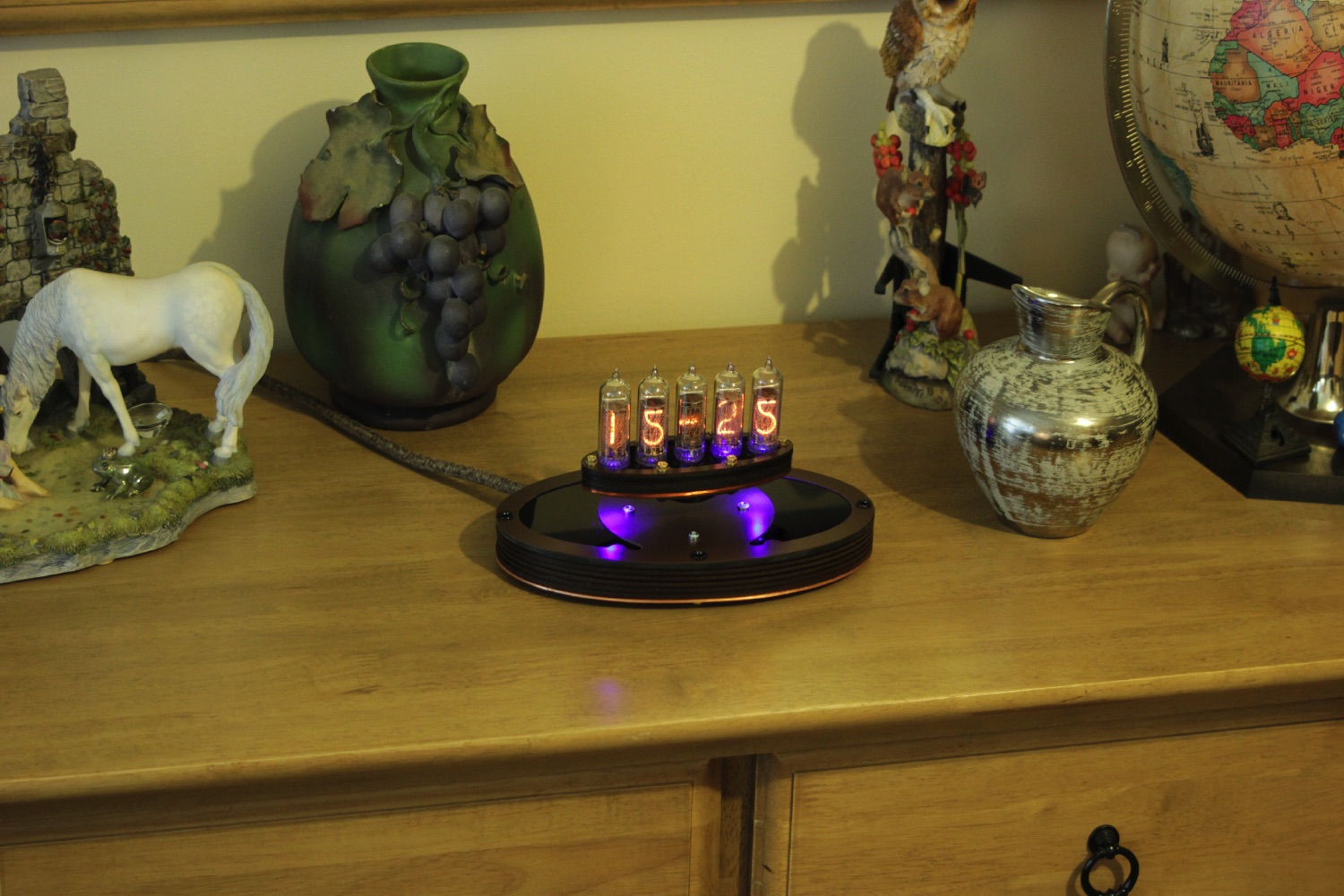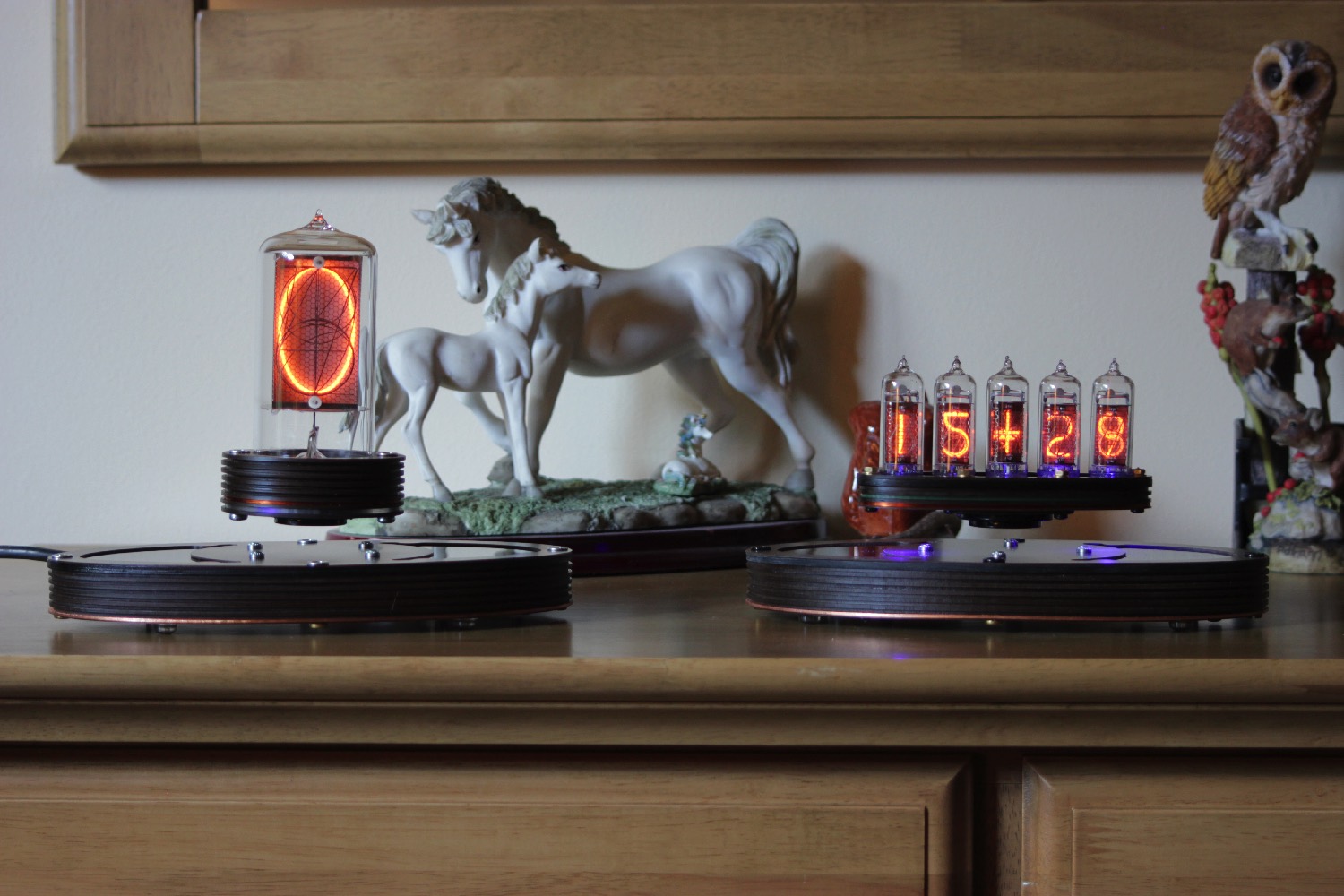That’s exactly what Scottish electronics whiz Tony “Lasermad” Adams has built — and is now offering to customers in the form of a Kickstarter campaign. “It’s a nixie clock unlike any most people will have seen,” Adams told Digital Trends. “It’s powered entirely by magnetic induction, and uses earth magnets and electromagnets to keep it suspended above the base. There are no wires, no contact with the ground at all — it just floats and operates without any apparent connections.”
The base itself plugs into a wall socket, with a battery backup that will keep the clock floating should a power outage occur. The floating nixie tubes are powered wirelessly courtesy of copper induction coils, while the time can be set either using buttons on the base, or with the aid of a smartphone app.
“Once it’s set up, it’s designed to run 24 hours per day for months or years at a time,” Adams says. “It’s not like the floating Bluetooth speakers that have been on the market for a while, which need charging up every few hours. Once this clock is properly floating it’ll keep doing so as long as it’s powered.”
Would-be Kickstarter backers have two versions of the Levitating Nixie Clock to choose from. For starters, there’s a five-tube Relay version, which looks a bit like a floating test tube rack. If you want to spend a bit more, you can pledge for a one-tube Beacon, which displays the time in sequential hour, minute and second flashes — or can be strung together with other Beacons to form one giant timepiece.
Should everything work out, Adams hopes the Levitating Nixie Clocks will be winging their way to customers by Christmas. “To be blunt, they’ll probably appeal most to anyone who [thinks that they are] a geek or a nerd,” he says.
But, hey, when clocks are this awesome, who doesn’t want to define themselves that way?







